Besides temperature and light, humidity is the most important environmental factor for a plant to grow. In this article we discuss the importance of humidity and the influence that it has on the plant.
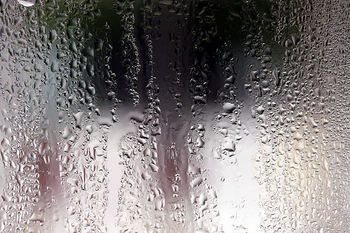
Condensation
Of all the growth factors – light, CO2, water and humidity – the last one is of great importance for Anthurium. An Anthurium greenhouse should always have a humidification system in countries where the outdoor humidity drops below 70%. For a relative low investment of approximately €1.5 per square metre, a low pressure humidification system can be installed. In the event of a high pressure system, a three- or four-fold increase in these costs should be taken into account. Improving the humidity can result in a considerable production increase.
An optimal growth climate for Anthurium with regard to humidity is quite easy to distinguish. When you enter the greenhouse it should feel fertile; at the slightest effort you should start to sweat. For eyewear users who enter the greenhouse, their glasses should fog up as a consequence of condensation on the lenses.
The following values can be kept roughly as an optimal moisture level in the greenhouse:


Advantages of a high relative humidity
Growing at a high relative humidity (RH) / low moisture deficit (MD) is of great importance for Anthurium to reach the maximum generation of assimilates. Due to a high RH, the stomata are opened to a maximum and CO2 can be absorbed easily by the plant. This can lead eventually to a very high percentage of greater yield compared to not humidifying.
The Anthurium leaf can also cool down better thanks to a wider stomata position. The leaf and flower colour will remain better and the flower size will increase. Pot Anthurium have the advantage that more assimilates will also lead to increased cutting formation and an improved plant structure.
Disadvantages of a high relative humidity
When Anthurium is grown for a long time at a high RH (> 90%) or MD (<2.0) and there is a lack of moisture removal, problems can occur. In the short term this can result, for example, in glassiness, which develops because the root pressure is high and the plant has insufficient evaporation options. In this case, water is pushed into the intercellular spaces between the cells.
In the longer term, a qualitatively unsatisfactory composition of the cells can occur. The lack of calcium in the ears of the flowers is a known example, in which the humidity and particularly the lack of moisture removal can play a role. The absorption of calcium is a passive process. The element enters the roots along with the water flow and is transported upward through the vessels into the actively evaporating parts.
In the event of insufficient evaporation options, the intake of calcium will stay behind and quality problems will occur.
Insufficient activation of the roots can also take place in the event of too little moisture removal. This makes the roots weaker and root rot can occur more easily.
When humidification is applied as a cooling process, it may occur that the humidity increases a lot (low MD). When this is the case over several days, the shelf life of the flowers will suffer severely.
Microclimate
Even though the humidity in the greenhouse may be correct, in young crops a poor climate around the plant may still occur. This so-called microclimate is a determining factor in the growth of young crops. This is mainly because during the first months of growth there is little leaf density. It is important to keep the substrate moist on top, which will result in a better microclimate. In the case of cultivation on perlite, at the beginning there is even extra light by reflection and more screening against the light is required. This can be done by installing temporarily a horticultural fleece over the plants.
Certain low pressure humidification systems are based on the principle of crop moistening. Drops of water are flung around and end up on the crop where they can evaporate subsequently and ensure a cooling effect. This is an efficient way to improve the humidity. However, you should prevent the leaf from getting fully wet for a long time with little energy (radiation) on the crop, because then the plant’s growth will stagnate.
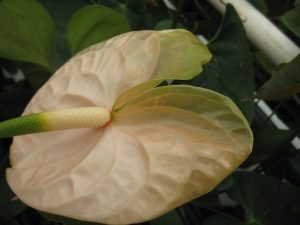
Severe flower glassiness
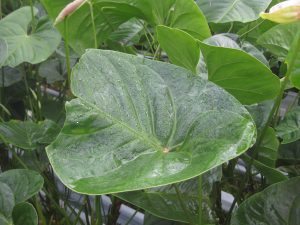
Wet crop with declining growth
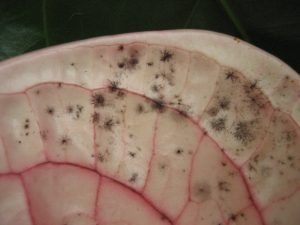
Sooty mould
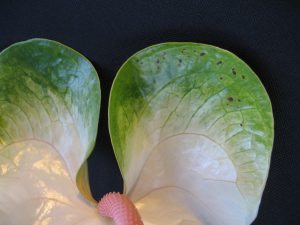
Brown spots on the ears because of calcium deficiency
Humidity in the cultivation of pot Anthurium
In addition to the handgrips to create optimal humidity in Anthurium, there are also several areas for attention that apply especially to pot Anthurium. These will be discussed below.
Drying of the top layer is also necessary in the cultivation of pot Anthurium. A dry top layer affects the humidity of the microclimate. Since pot Anthuriums are irrigated less frequently, the top layer can be dry for a longer time. This also depends on the capillarity of the substrate. Generally speaking, regular short spraying, in between large irrigation sessions, prevents the microclimate from becoming too poor.
Spacing
An additional factor is the spacing of the plants. In doing so, the microclimate will be disrupted suddenly and the plant will end up in another climate after spacing. The plants will get used to it and after several weeks the plant density will increase, with a greater chance of a more stable microclimate. With regard to spacing, the moisture in the microclimate deserves special attention. A large irrigation session is often given after spacing so that sufficient moisture is present in the substrate. It is also beneficial when the crop is watered briefly in between the irrigation sessions in order to keep the top layer moist.
Heating
Heating under the pots also has a major impact on the moisture in the microclimate. At an overly high temperature in the pipes under the tables or on the floor, there is a greater chance of removing moisture from the microclimate by heating. On the other hand, a minimum temperature on the floor ensures that the moisture evaporates from the substrate, which enables the moisture level to increase in the microclimate. In the morning hours in particular it is good to activate the plant with a minimum pipe and at the same time to remove the moisture from the substrate by heating, which will be retained subsequently at leaf level.
Concrete floor
A lot of pot Anthuriums are grown on concrete floors. In order to introduce moisture, you can choose to set up a thin water film on the floor. The height of this layer of water will depend on the height of the base under the pot. When a floor is half empty, it is recommended to put water on the floor to introduce moisture into the microclimate.
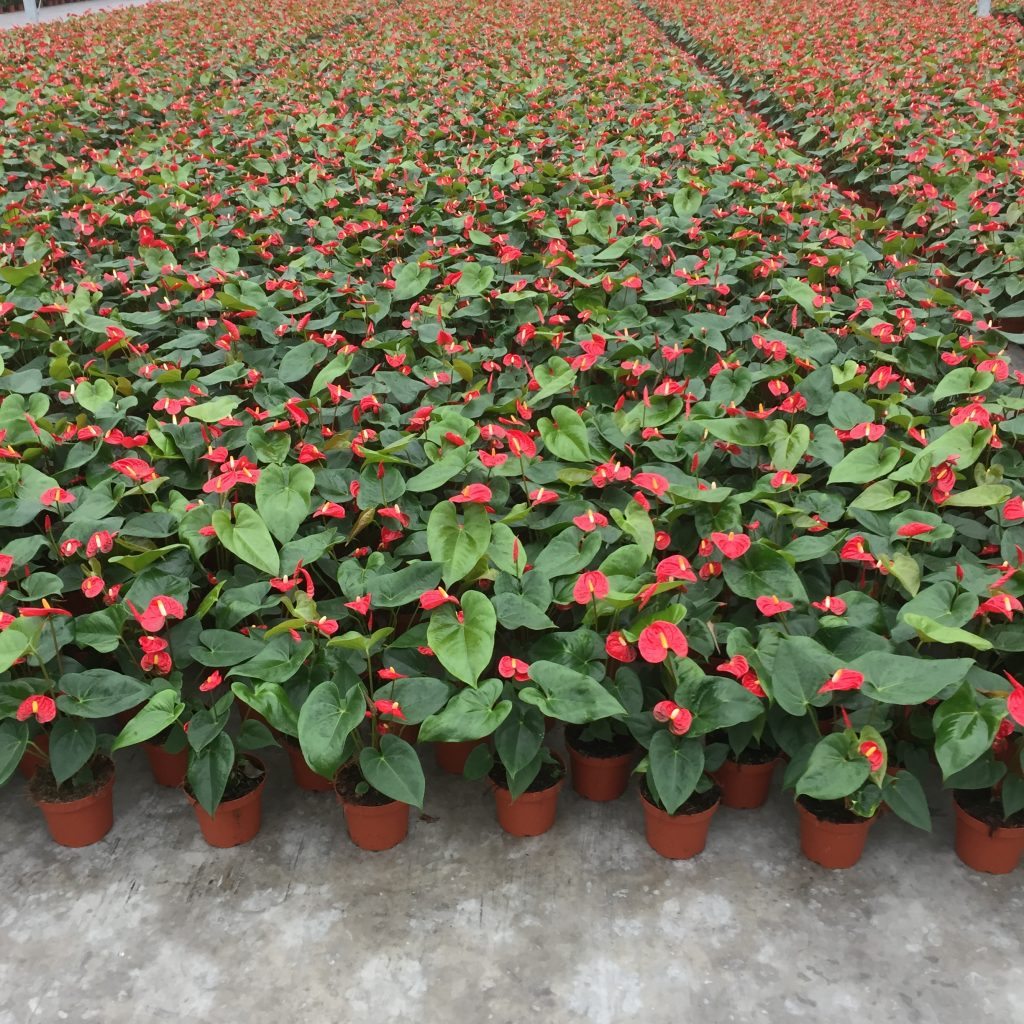
It is clear that good humidity is of great importance for the plant. If you have any additional questions or if you want to receive more information on this or another cultivation-related subject, please contact Bureau IMAC Bleiswijk BV. Click here for more information about humidity in the cultivation.
This article is part of the Anthurinfo – edition 2 /2017. Please click here for the complete edition.





